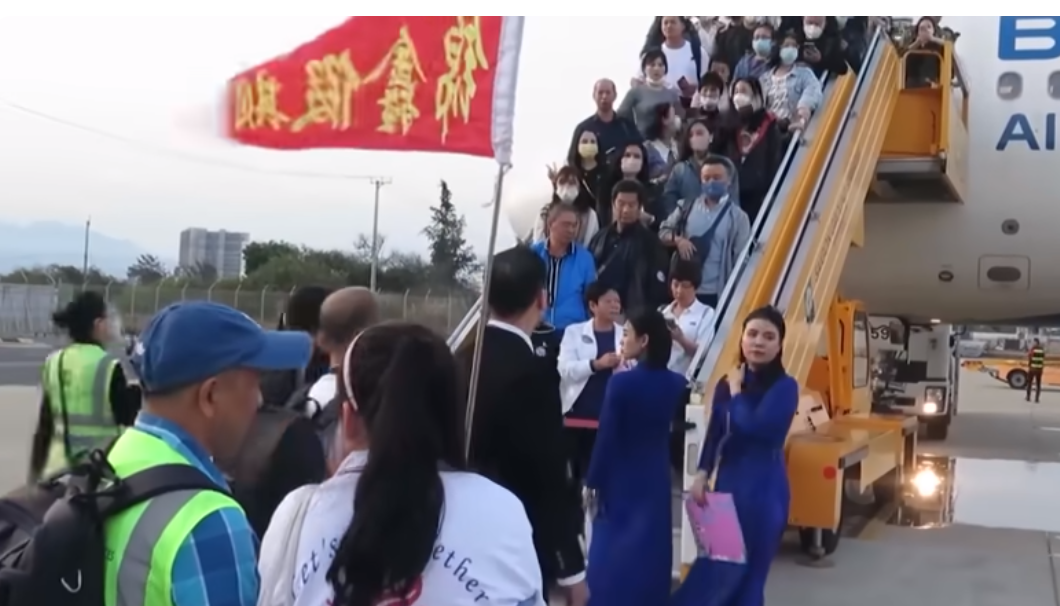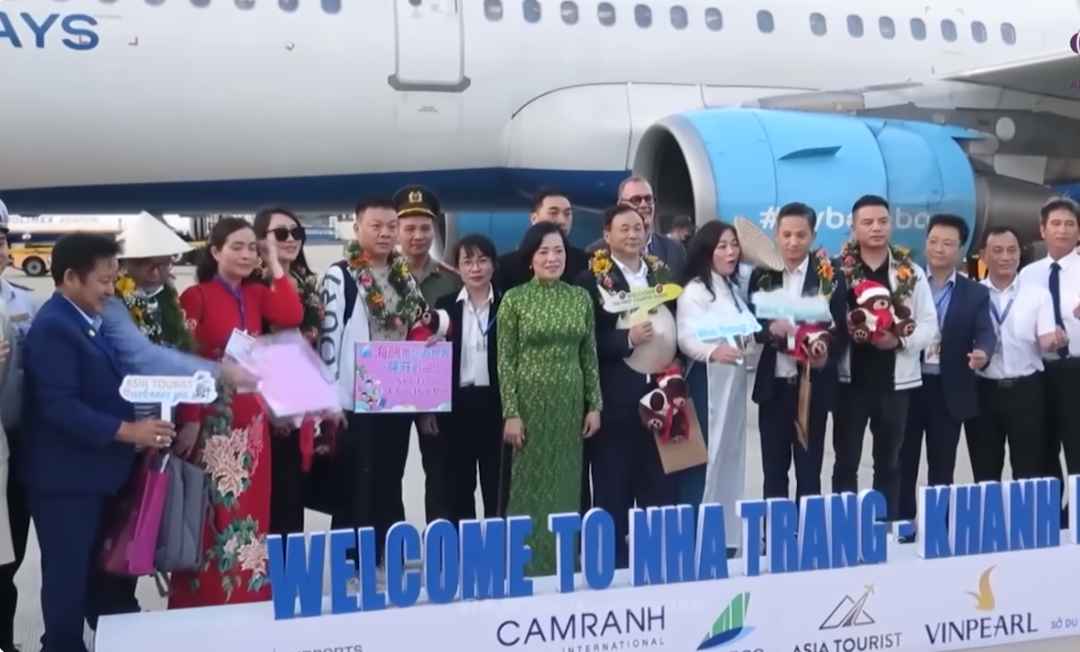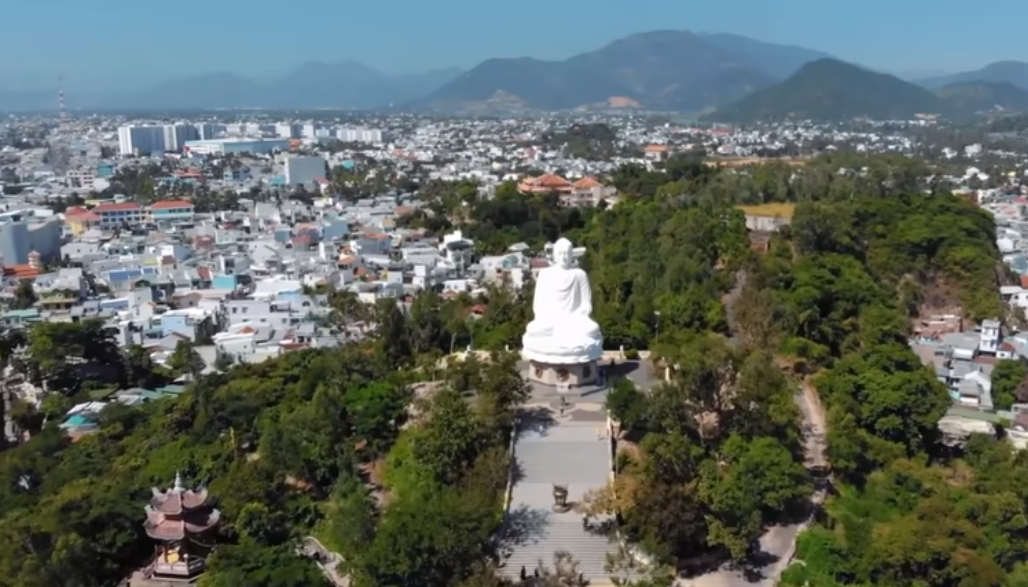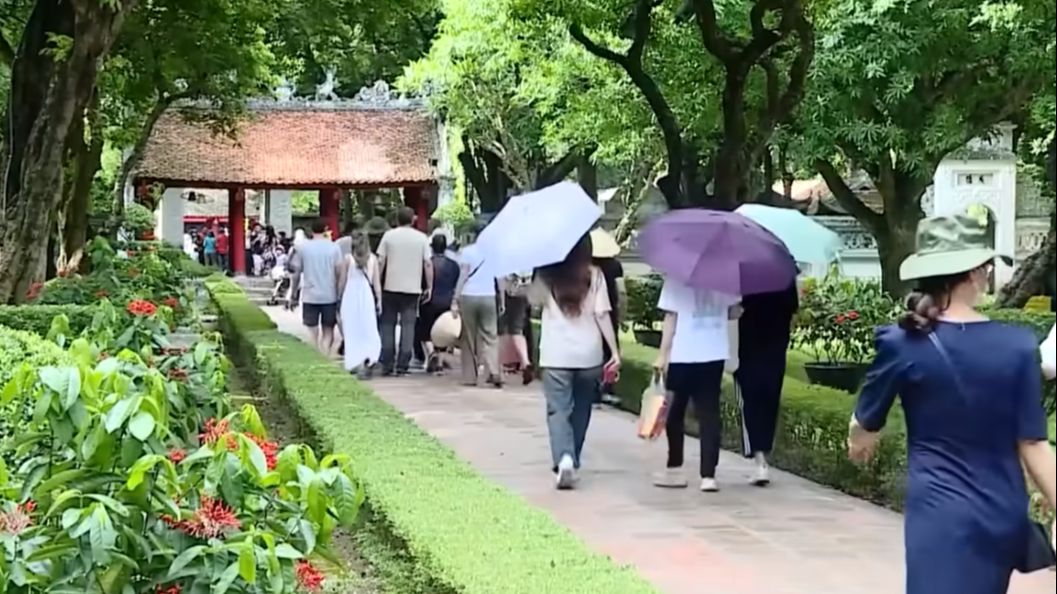With a population of 1.4 billion people and geographical proximity, China has always been an important tourism market for Vietnam. Surely you remember that before the COVID-19 pandemic, China was one of the countries with the most tourists coming to Vietnam, with nearly 6 million Chinese visitors in 2019 alone. China accounted for one-third of the total international visitors to Vietnam. However, after the pandemic, China implemented a Zero COVID policy, closing itself off almost completely from the world. This left a significant gap in the international tourism market to Vietnam, as the Zero COVID policy restricted Chinese citizens from traveling abroad. Therefore, the event of China reopening its borders to international visitors from January 8, 2023, is a positive signal for Vietnam's tourism industry. Since then, the number of Chinese tourists coming to Vietnam has quickly recovered.

According to the latest data, in the first six months of 2024, the number of Chinese tourists to Vietnam reached 1,891,096 arrivals. In comparison, during the same period in 2023, there were 557,151 Chinese visitors to Vietnam. Thus, in one year, the number of Chinese tourists to Vietnam has increased more than three times, which is indeed an impressive increase. China is currently the second-largest source market for Vietnam in the first half of 2024, accounting for over 20% of the total international visitors to Vietnam during this period. Notably, in May 2024, the number of Chinese tourists to Vietnam was 357,190 arrivals, reaching 243.4% compared to the same period last year. If we consider only the year 2024, China is the largest source of international visitors to Vietnam.
So why is there a phenomenon of Chinese tourists flocking to Vietnam?
The first reason is the increasingly vibrant tourism routes between Vietnam and China, with products continuously being added, offering a variety of destinations and affordable prices to meet the needs of many customer segments regarding both air and land travel options. For example, since last July, the flight route from Hai Phong to Lijiang has been launched, followed by the opening of the Hanoi-Hai Khau route, and most recently, an airline has launched a new route from Hanoi to Chongqing with a frequency of three flights a week.

This route opens up opportunities for travel companies and tour operators from both countries to develop and create tourism products such as a 6-day, 5-night program exploring Chongqing, Chengdu, and Leshan. Currently, Chinese airlines have opened routes to almost all key tourist areas in Vietnam, and the route from Chongqing to Hanoi is an opportunity for Vietnam to tap into the vast customer base in western China. The two countries, which are already geographically close, now have even easier travel options, so it is understandable why Vietnam is a preferred choice for Chinese tourists, especially during holiday periods.

Secondly, not only is there geographical proximity, but the two nations also share cultural and culinary similarities. For example, in terms of cultural similarities, both Vietnam and China celebrate the Lunar New Year with many similar customs such as hanging peach branches, giving lucky money for the new year, visiting relatives, and pasting red couplets. These are long-standing traditions that have been preserved to this day. Not only during the New Year but also many festivals that both countries share, such as the Lantern Festival, which is the full moon of the first month, the Qingming Festival, the Cold Food Festival, the Mid-Autumn Festival, the Vu Lan Festival, and the Day of Wandering Souls,... The two countries share many common points in Eastern culture, so Chinese tourists coming to Vietnam will not feel out of place, and when it comes to cuisine, there are even more similarities.
First, we can mention the use of chopsticks, unlike Westerners who eat with knives and forks, or Indians and Sri Lankans who eat with their hands, Vietnamese and Chinese people, like many other Asian countries, use chopsticks when eating rice. The cooking ingredients of both countries are diverse and seasonal, with rice being the staple food in their meals, both originating from countries with a long-standing rice civilization. The taste is also similar; in Vietnam, depending on the region, the taste may vary, with some regions preferring sour and spicy flavors, while others prefer salty and sweet. The Chinese also have different tastes in each region, but generally, they share the same flavors mentioned above. Attracting visitors due to these similarities, but interestingly, Vietnam also captivates Chinese tourists with its differences.
Everyone knows that Vietnam is blessed with beautiful landscapes and tourist destinations, among which warm coastal areas cannot be overlooked. China, which is 30 times larger than Vietnam, is not short of famous scenic spots, but many places in China have a cold climate. Therefore, the warm areas in Vietnam become one of the ideal destinations for Chinese tourists. According to Agoda's data, the top five destinations in Vietnam that Chinese tourists search for the most are Ho Chi Minh City, Hanoi, Nha Trang, Da Nang, and Phu Quoc Island.

In addition to the two largest cities in the country being almost default destinations that anyone visiting Vietnam must stop by first, from there, no matter where you go, you will notice that the other three destinations are all related to the sea. Among them, Nha Trang is known as the Pearl of the East Sea, shaped like a crescent moon, embracing Nha Trang Bay along with 19 large and small islands with a mild climate of over 315 sunny days. In 2003, Nha Trang was recognized by UNESCO as one of the 29 most beautiful bays in the world. From Hanoi or Ho Chi Minh City, it is easy to fly to Nha Trang via Cam Ranh International Airport.
Additionally, you can take a Limousine bus along the North-South route, while Da Nang has been honored as one of the most livable cities in the world, blessed by nature with wide and gentle rivers, alluring blue beaches, and Da Nang always captivates the emotions of tourists and immigrants from the very first glance. Its beauty and livability are also hidden in its fresh climate, convenient transportation, clean streets, and the hospitality of the local people. The people of Da Nang are very friendly, open, and honest; this is a deep cultural trait, and without this essence, it would no longer be a livable city.

Meanwhile, Phu Quoc Island has proven to be quite attractive to international tourists, with Phu Quoc's weather being ideal and mild during the autumn and winter. The Pearl Island hardly experiences rain, with beautiful sunshine like pouring honey, calm seas, and cool weather, making it suitable for Chinese tourists to escape the cold in their country and seek warm sunshine on the island. They can experience outdoor activities such as swimming, snorkeling, kayaking,...
Not only the differences in nature but also the new experiences in Vietnamese culinary culture are attractive to Chinese tourists. It is said that eating rice at home is like taking a wife from Japan; one must say that Chinese cuisine is incredibly wonderful, but one thing everyone agrees on is that Chinese people use a lot of oil and rarely combine spices to create flavor combinations. Chinese people love oily food and hardly eat boiled dishes. If you scroll through Chinese food videos on social media, you can see that after cooking, there is often a layer of oil on top, and chili is especially indispensable. Meanwhile, with the tropical climate, the North has hot summers, and the South is hot year-round, Vietnamese people prefer light dishes that avoid oil. Vietnamese dishes are also a combination of many spices that bring harmony. This is something that not only Chinese tourists but also international friends in general love about Vietnamese cuisine.
Chinese people also like to come to Vietnam as a form of "escaping" from the pressures of life, especially in large cities known for their harsh 996 work culture, which means working from 9:00 AM to 9:00 PM, six days a week. Another reason is that more and more Chinese businesses are investing in Vietnam; they come to Vietnam to seek tourism cooperation opportunities and understand the market, bringing Vietnam closer to China. Speaking of this, we cannot overlook an extremely important factor: Vietnam and China are increasingly interested in promoting exchanges between the two peoples to understand each other better.
This includes the contributions of the large Vietnamese community living and working in China and vice versa, as Chinese friends have chosen Vietnam as a safe haven. There are also Vietnamese names that have made their mark in China, such as Chipu, who caused a sensation when participating in the program "Sister Who Rides the Wind and Breaks the Waves," followed by Sunny Ha Linh. Two songs "Si Tình" by Hoàng Thùy Linh went viral from social media to real life, making even Chinese stars dance along.
The recovery of visitors from the Chinese market will be an opportunity for Vietnamese tourism to take off, and all countries, especially in Southeast Asia, are seeking every policy to attract Chinese tourists. Therefore, Vietnam cannot stand aside in promoting Chinese tourists.
